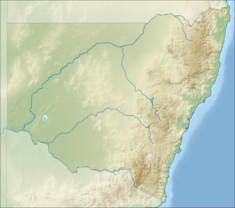소금 대체품
Salt substitute저염소염으로도 알려진 소금 대체물은 비슷한 맛을 유지하면서 높은 염화나트륨[1] 섭취와 관련된 고혈압과 심혈관 질환의 위험을 피하기 위해 시판되는 식용 소금(식용 소금)의 저염 대체품이다.
주요 소금 대체물은 염화나트륨 이외의 화합물의 결과로 맛을 내는 비나트륨 식탁용 소금입니다.비나트륨 염은 매일 나트륨 섭취를 줄이고 이 원소의 건강상 영향을 감소시킵니다.
저나트륨 다이어트
현재 WHO [2][3]지침에 따르면, 성인은 하루에 나트륨 2,000mg 이하(즉, 전통적인 식탁용 소금 약 5그램)와 [4]칼륨 최소 3,510mg을 섭취해야 합니다.유럽에서는 어른들과 어린이들이 전문가들이 [5]권장하는 것보다 전통적인 소금을 두 배 정도 더 많이 소비한다.
예
칼륨
칼륨은 나트륨의 염도와 매우 유사합니다.실제로 염화칼륨(염화칼륨이라고도 함)은 가장 일반적으로 사용되는 염분 물질입니다.건강한 사람에 대한 독성은 식탁용 소금과 거의 동일하다(LD는50 약 2.5g/kg, 75kg인 사람의 경우 약 190g).젖산칼륨은 또한 식품에서 나트륨 수치를 낮추기 위해 사용될 수 있으며 육류와 가금류 [6]제품에 일반적으로 사용됩니다.칼륨의 일일 권장 허용량은 [7]나트륨보다 높지만, 일반적인 사람은 하루에 나트륨보다 적은 [8]칼륨을 소비합니다.염화칼륨은 더 높은 비율로 사용하면 쓴 뒷맛이 나기 때문에 소비자들은 이를 좋아하지 않을 수 있다.그 결과 일부 제제는 염화나트륨의 절반만 [9]칼륨으로 대체한다.
다양한 질병과 약물은 인체의 칼륨 배출을 감소시켜 잠재적으로 치명적인 고칼륨혈증의 위험을 증가시킬 수 있다.신부전, 심부전, 당뇨병이 있는 사람들은 의사의 조언 없이 소금 대체품을 사용하지 않는 것이 좋습니다.소금 대체제 제조업체인 LoSalt는 다음과 같은 처방약을 복용하는 사람들은 소금 대체제를 사용해서는 안 된다는 권고[10] 성명을 발표했다: 아밀로라이드, 트리아메테렌, 다이탁, 캡토릴 그리고 다른 앤지오텐신 변환 효소 억제제, 스피로노락톤, 그리고 에프레레논.
기타 타입
사과산나트륨은 맛이 짜고 다른 소금 대체물과 섞일 수 있다.나트륨을 함유하고 있지만 질량 분율은 [11]더 낮다.
탈수, 분쇄된 살리코니아(글라스워트, 습지 샘파이어)는 식탁용 소금만큼 짜지만 나트륨이 [13][14]적다는 소금 대체품으로 "그린 솔트"라는 상표명으로 판매된다.
역사
역사적으로 (20세기 후반) 마그네슘과 칼륨을 포함한 많은 물질들이 소금 대체물로 시도되었다.다음과 [15][16]같은 것이 있습니다.
- 카르날라이트(KMgCl3•6)H2O)
- Kainite (KCl•MgSO4•2)H2O)
- langbeinite(KMG22(SO4))2
- Sylvite (KCl)– 현재 사용되고 있습니다.
- 폴리할라이트(KMgCa22(SO4)•42H2O)
- Epsomite(MgSO
4·7)H
2O) - 키세라이트(MgSO
4·)H
2O)
심지어 20세기 초에는 염화리튬이 고혈압 환자의 소금 대체물로 사용되었다.하지만 불행히도 과다복용은 흔했고 사망자가 발생했고 [17]1949년에 금지되었다.
첨가물
글루탐산나트륨과 같은 향미 증진제는, 비록 진정한 소금 대안은 아니지만, 고소한 [18]맛을 높여 소금 사용을 줄이는데 도움을 줍니다.염화칼륨에 가수분해단백질[19] 또는 5'-뉴클레오티드를[20] 첨가하여 소금 대체물의 풍미를 개선한다.
소금 대체물은 또한 필수 영양소로 더욱 농축될 수 있다.소금 대체물은 요오드 결핍 문제와 유사하게 [21][22]철과 같은 필요한 미량 영양소의 부족한 공급과 같은 "숨겨진 배고픔"을 제거하는 데 도움이 될 수 있습니다.이러한 물질은 유니세프에 의해 "슈퍼 소금"[23]으로 홍보된다.
「 」를 참조해 주세요.
레퍼런스
- ^ 소금과 건강(PDF).영양과학자문위원회(SACN)
- ^ "WHO WHO issues new guidance on dietary salt and potassium". WHO. Archived from the original on February 3, 2013.
- ^ World Health Organization (2012). Guideline. Sodium intake for adults and children. Geneva, Switzerland. ISBN 9789241504836. OCLC 849715509.
- ^ Jarosz, Mirosław; Rychlik, Ewa; Stoś, Katarzyna; Wierzejska, Regina; Wojtasik, Anna; Charzewska, Jadwiga; Mojska, Hanna; Szponar, Lucjan; Sajór, Iwona (2017). Normy żywienia dla populacji Polski (in Polish). Warszawa: Instytut Żywności i Żywienia. ISBN 9788386060894. OCLC 1022820929.
- ^ Powles, John; Fahimi, Saman; Micha, Renata; Khatibzadeh, Shahab; Shi, Peilin; Ezzati, Majid; Engell, Rebecca E.; Lim, Stephen S.; Danaei, Goodarz; Mozaffarian, Dariush; Group (NutriCoDE), on behalf of the Global Burden of Diseases Nutrition and Chronic Diseases Expert (2013-12-01). "Global, regional and national sodium intakes in 1990 and 2010: a systematic analysis of 24 h urinary sodium excretion and dietary surveys worldwide". BMJ Open. 3 (12): e003733. doi:10.1136/bmjopen-2013-003733. ISSN 2044-6055. PMC 3884590. PMID 24366578.
- ^ 저나트륨 육류 제품.http://www.purac.com/purac_com/01d7a1a1dce330c46ada4f832de8e6ca.php/
- ^ "Dietary Reference Intakes : Electrolytes and Water" (PDF). The National Academies. 2004. Archived from the original (PDF) on 11 October 2010. Retrieved 14 August 2011.
- ^ Caggiula, AW; RR Wing; MP Nowalk; NC Milas; S Lee; H Langford (1985). "The measurement of sodium and potassium intake". American Journal of Clinical Nutrition. 42 (3): 391–398. doi:10.1093/ajcn/42.3.391. PMID 4036845. Retrieved 2008-11-17.
- ^ Drake, S. L.; Drake, M. A. (2011). "Comparison of Salty Taste and Time Intensity of Sea and Land Salts from Around the World". Journal of Sensory Studies. 26 (1): 25–34. doi:10.1111/j.1745-459X.2010.00317.x. ISSN 1745-459X.
- ^ LoSalt 어드바이저리 스테이트먼트(PDF)
- ^ Whitmore, Frank C. (2012). Organic Chemistry, Volume One : Part I: Aliphatic Compounds (2nd ed.). Mineola, New York: Dover Publications. p. 397. ISBN 9780486311159.
- ^ "Seaweed granules may replace salt in foods". foodnavigator.com.
- ^ Florence Fabricant, "뿌리기 위해:소금 라인업에 녹색 추가", 뉴욕타임스, 2021년 8월 11일, 페이지 D3, 온라인 버전 "소금 라인업에 녹색 추가" 2021년 8월 9일
- ^ Green Salt 웹 사이트, [1]
- ^ Lifton, R. P. (1995-09-12). "Genetic determinants of human hypertension". Proceedings of the National Academy of Sciences. 92 (19): 8545–8551. doi:10.1073/pnas.92.19.8545. ISSN 0027-8424. PMC 41004. PMID 7567973.
- ^ Dahl, Lewis K.; Heine, Martha; Thompson, Keith (January 1974). "Genetic Influence of the Kidneys on Blood Pressure: Evidence from Chronic Renal Homografts in Rats with Opposite Predispositions to Hypertension". Circulation Research. 34 (1): 94–101. doi:10.1161/01.RES.34.1.94. ISSN 0009-7330. PMID 4588315.
- ^ Marmol, F. (2008). "Lithium: Bipolar disorder and neurodegenerative diseases Possible cellular mechanisms of the therapeutic effects of lithium". Progress in Neuro-Psychopharmacology and Biological Psychiatry. 32 (8): 1761–1771. doi:10.1016/j.pnpbp.2008.08.012. PMID 18789369. S2CID 25861243.
- ^ Lubin, Gus (2 February 2017). "Everyone should cook with MSG, says food scientist". Business Insider. Retrieved 27 January 2019.
- ^ 미국 특허 4451494
- ^ 미국 특허 4243691
- ^ Afshin, Ashkan; Sur, Patrick John; Fay, Kairsten A.; Cornaby, Leslie; Ferrara, Giannina; Salama, Joseph S; Mullany, Erin C; Abate, Kalkidan Hassen; Abbafati, Cristiana; Abebe, Zegeye; Afarideh, Mohsen (May 2019). "Health effects of dietary risks in 195 countries, 1990–2017: a systematic analysis for the Global Burden of Disease Study 2017". The Lancet. 393 (10184): 1958–1972. doi:10.1016/S0140-6736(19)30041-8. PMC 6899507. PMID 30954305.
- ^ Das, Jai K; Salam, Rehana A; Kumar, Rohail; Bhutta, Zulfiqar A (December 2013). "Micronutrient fortification of food and its impact on woman and child health: a systematic review". Systematic Reviews. 2 (1): 67. doi:10.1186/2046-4053-2-67. ISSN 2046-4053. PMC 3765883. PMID 23971426.
- ^ "VITAMIN & MINERAL DEFICIENCY: A GLOBAL PROGRESS REPORT" (PDF).



